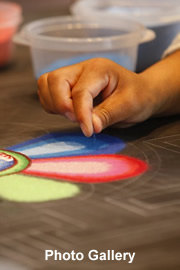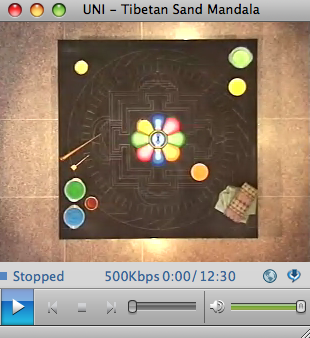Tibetan Sand Mandala
The University of Northern Iowa concludes
a spiritual experience of Tibet
The University of Northern Iowa hosted four visitors from the Tibetan Cultural Institute and the University of Arkansas who constructed a sand mandala. Three of the visitors were monks, Geshe Thupten Dorjee, Gedun Pekar and Lama Agha; the fourth was Zoepa Gyatso.
Mandalas are geometric patterns laid out with compasses and chalk lines and then filled in, grain by grain, with sand ground from white marble and colored. The sand is applied with small tubes, funnels and scrapers until the pattern is achieved. They’re believed to hold magical power and said to prolong life and protect against evil. Visible for centuries only in Buddhist monasteries, the Dalai Lama allowed them to be open to the public in 1988. The mandala was presented as an educational tool to the community and as an offering of peace and harmony.
The construction began with an opening ceremony and concludes with a ceremony where the mandala was destroyed and the sand distributed to the audience. A procession was made to flowing water where the remainder of the sand was cast away to symbolize the transitory nature of life.
Geshe Thupten Dorjee's opening ceremony remarks
Geshe Thupten Dorjee's closing ceremony remarks
Closing Ceremony Photos
(Requires the free RealPlayer)

